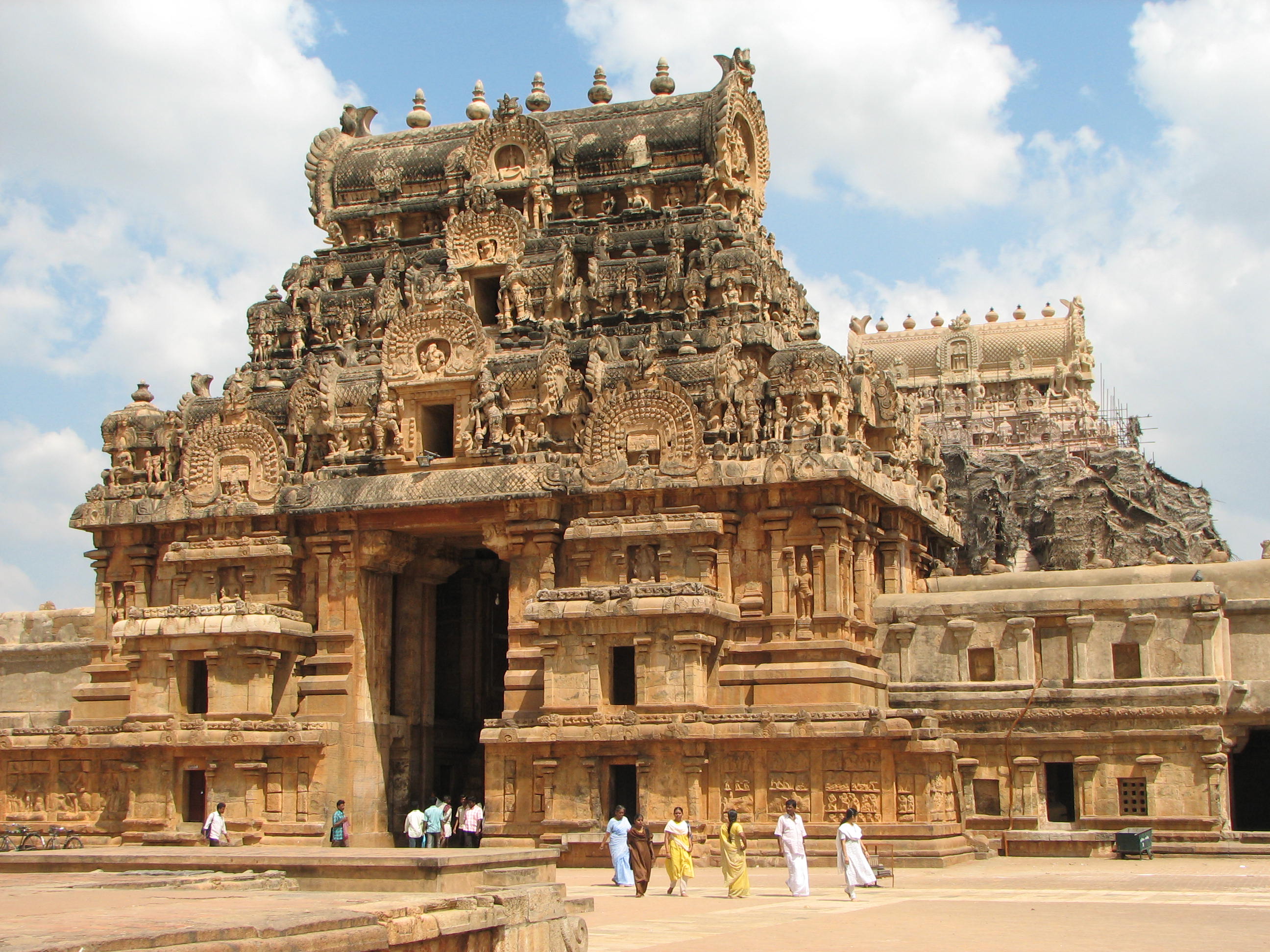The Peruvudaiyar Kovil, also known as Brihadeeswara Temple, RajaRajeswara Temple and Rajarajeswaram, at Thanjavur in the Indian state of Tamil Nadu, is a Hindu temple dedicated to Shiva and an art of the work achieved by Cholas in Tamil architecture. The temple is part of the UNESCO World Heritage Site "Great Living Chola Temples".
This temple is one of India's most prized architectural sites. The temple stands amidst fortified walls that were probably added in the 16th century. The vimana or (temple tower) is 216 ft (66 m) high[3] and is among the tallest of its kind in the world. The Kumbam (Kalasha or Chikharam) (apex or the bulbous structure on the top) of the temple is carved out of a single stone
There is a big statue of Nandi (sacred bull), carved out of a single rock, at the entrance measuring about 16 feet long and 13 feet high.
The entire temple structure is made out of granite, the nearest sources of which are close to Tiruchchirapalli, about 60 km to the west of Thanjavur, where the temple is.
Built in 1010 AD by Raja Raja Chola I in Thanjavur, Brihadeeswarar Temple, also popularly known as the ‘Big Temple', turned 1000 years old in 2010.
The temple had its foundations laid out by the Tamil emperor Arulmozhivarman, popularly called Rajaraja Chola I, (Rājarāja Choļan ?) in 1002 CE, as the first of the great Tamil Chola building projects. It was built to grace the throne of the Chola empire in compliance of a command given to him in his dream. The scale and grandeur is in the Chola tradition. An axial and symmetrical geometry rules the temple layout.Temples from this period and the following two centuries are an expression of the Tamils (Chola) wealth, power and artistic expertise. The emergence of such features as the multifaceted columns with projecting square capitals signal the arrival of the new Chola style. The Brihadeeswarar Temple was built to be the royal temple to display the emperor's vision of his power and his relationship to the universal order. The temple was the site of the major royal ceremonies such as anointing the emperor and linking him with its deity, Shiva, and the daily rituals of the deities were mirrored by those of the king. It is an architectural exemplar showcasing the pure form of the Dravida type of temple architecture and representative of the Chola Empire ideology and the Tamil civilisation in Southern India. The temple "testify to the brilliant achievements of the Chola in architecture, sculpture, painting and bronze casting.
